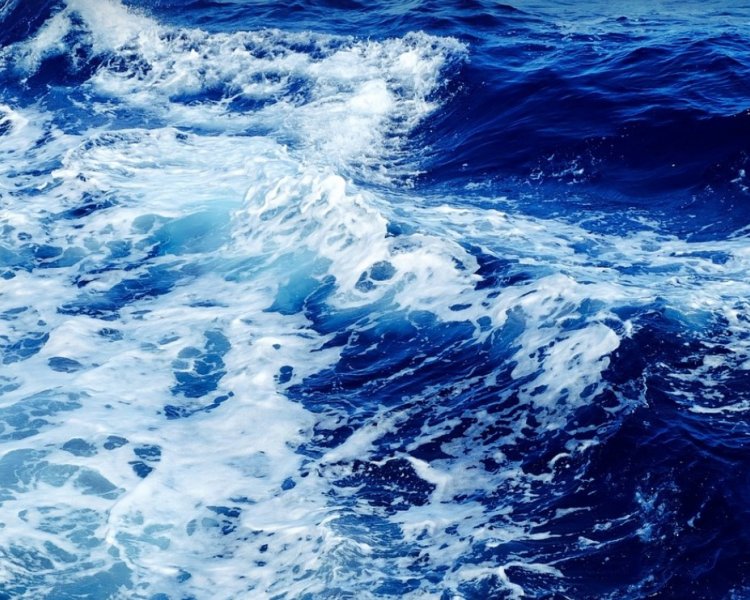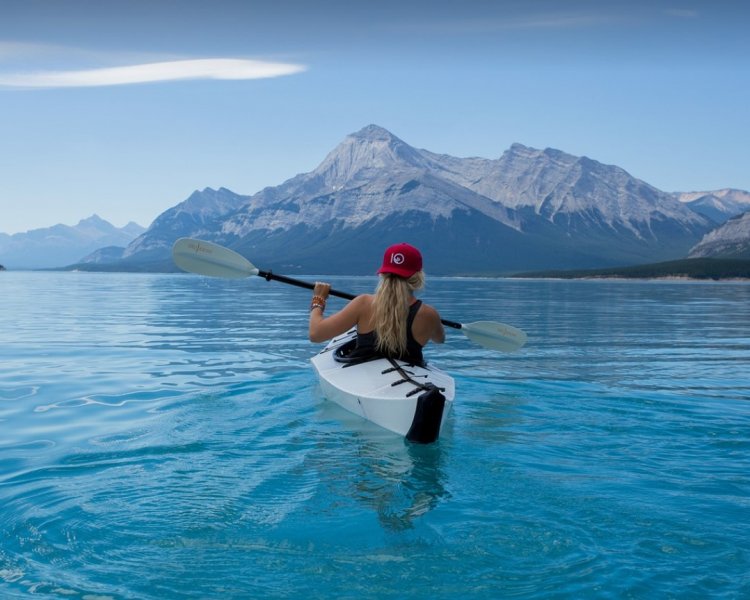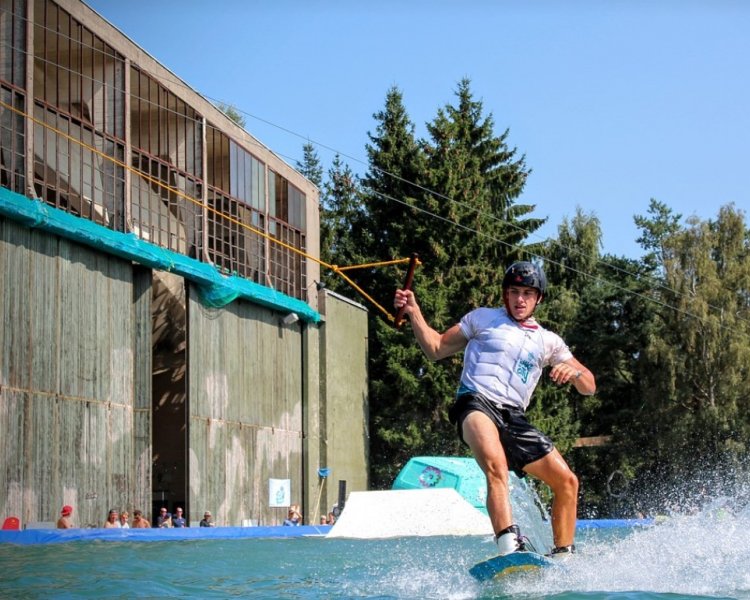Wake Surfing Vs Wakeboarding - Are They The Same?

Whether you are passionate about water sports or merely have some interest in the topic, you might know what wakeboarding is.
Recently, a new modality has been on the rise, boosted by the power of social media: wake surfing. At first glance they look identical, but..are they really?
What is the difference between wake surfing and wakeboarding? The major differences between sports are the board, bindings, and the rope. The board in wake surfing is longer and surfboard-like designed. Bindings are exclusive to wakeboarding, and the rope is used in wake surfing only on a few occasions.
Read on if you want to know a bit more about the similarities shared by these fantastic sports, and the differences between them.
Read Also: Is Wakeboarding Dangerous?
What is Wake Surfing?
The sport is a discipline that blends aspects of wakeboarding and surfing. Long story short, wake surfing consists of a surfer trailing behind a boat on a surfboard that is about 1,5 meters long. Literally, the rider surfs the wake generated by the boat without being attached to the boat.
The boats can be loaded with extra weight to increase the height of the wake, and make the sport even more exciting for those who like to be challenged. Sometimes, due to the extra freight, boats used for wake surfing look as if they may tip over.
A boat captain might even ask the passengers to seat on the same side of the vessel, so more ballast can be added to that area! As crazy as it sounds, this creates the perfect conditions for producing an excellent wake.
Origins of Wake Surfing
Wake surfing has been around since the 60’s, but it wasn’t until the 90’s before it started catching on. Everyone at the beginning was a bit skeptic, as nobody wanted to be that close to the boat.
Initially, it was called “boat surfing”, as the boards used to its practice were the same as for surfing. Later on, companies started to build wake surfing boards and the name wake surfing started to spread out quickly.
The first world wake surfing competition started in 1996 in Michin Bay. In 2011, Parker Arizona became host to the world’s wake surfing competition with the most competitors yet. Due to the increase in popularity in the last decade, the number of participants has been+ growing each and every year.
The Technique
- The surfer should be lying in the water with his or her feet on the board.
- Then, as soon as the rope stretches and the rider feels the pull from the boat, he or she should be ready to quickly stand up.
- Now that the surfer is in stand up position, keeps holding onto the towrope as the boat picks up speed - eventually reaching speed anywhere from 14 km/h to 17 km/h-.
- Once the boat picks up speed, the rider should shift to a surfing position, and let go of the rope.
- Now, surf time! After dropping the rope, the rider is ready to surf through the wake that the boat creates.
What is Wakeboarding?
Essentially, wakeboarding is a water sport in which the rider, towed behind a motorboat across its wake slides through the surface standing on a wakeboard (shortboard with foot bindings).
We made an extensive article about wakeboarding in which you can learn a lot more about the sport and its particularities. Take a look by clicking here.
Wake Surfing vs Wakeboarding: Similarities & Differences
Based on their name alone, you might assume they refer to the same sport, but let’s dive in a bit deeper and we will find the standpoints where they differ.
Similarities
- The name: let’s tackle the issue from the very beginning. Why both sports have the word wake in their names? By definition, the word Wake refers to the wave that spreads behind a boat as it moves forward. Therefore, modalities that include the word “wake” on its name, will be disciplines where the user will surf the wave created by the boat.
- The rope: although the use of the rope may differ from one discipline to another, they have to be held on to it at some point. Whereas in wake surfing the rider releases the rope to ride out a wave, wakeboard users will be towed in throughout the duration of the ride.
So, even though this might be seen as a differentiation point, it could also be seen as a link between both sports, as the use of the rope in both cases is essential.
Differences
So, if you are one of those that thought that wakeboarding and wake surfing was pretty much the same thing, keep on reading and you will find out that they are quite apart from each other:
- The board: wake surf boards are typically longer with a more surfboard-like design (hence the sport’s name). After all, the purpose is to ride a small wave; to surf it like an ocean roller.
- The bindings: this might be the biggest difference between both sports. In wake surfing, there are no bindings attaching the rider to the board; in wakeboarding, being attached to the board is essential to the sport.
- The boat: boats used in wakeboarding are typically more complex, featuring large “wake towers” made of stainless steel and aluminum piping. Wake surfing requires an inboard boat where the propeller is under the boat for obvious security reasons.
- The rope: wait, wasn’t this a similarity? Yes and no. As I mentioned before, both sports require the use of a rope. But whereas in wakeboarding is essential throughout the whole ride, in wake surfing is merely used for picking up speed and standing up.
Tricks to Step up Your Wake Surfing Game
Professional wake surfers and advanced riders can perform tricks, spins, and very cool moves -some of them may be able to ride the wave for several minutes-.
Some of these moves are a blend between key maneuvers found in wakeboarding, snowboarding and the most progressive side of surfing, skimboarding, and skateboarding.
Here’s an example of tricks you can learn to up your wake surfing game:
- Floater: ride on top of the wave for a short time and feel like a pro. Easy to do trick, recommended for beginners!
- Ollie: common to several sliding sports, the ollie is the act of jumping the board off the surface.
- Pumping: bend your knees and ride your board up and down the wave. This trick is mostly used in surfing to generate speed before going for an aerial.
- Snap: if you want to surprise your friends standing in the boat, turn banking off of the wave and create a splash so they can feel the temperature of the water.
- Aerial: have you mastered the pumping? Now it is time to use that speed generated, combine it with an ollie at the top of the wave and some degree of rotation and you will have one of the coolest moves in sliding sports.
Why is Wake Surfing Popular?
There are many reasons that can impact the popularity of a sport. Wake surfing has been around even before wakeboarding, and it has not been until recently that we have heard much about the sport.
You can find some of the reasons behind that popularity boost in the following list:
- New focus within the inboard boat industry. Today nearly all competition inboard boats have some sort of wake surfing features.
- Marketing. As soon as the trend started, it was fed by the attention of the sports industry, which shifted its focus to wake surfing.
- Sponsors. Now the athletes have boating sponsors that bring the modality from an amateur practice to a professional activity.
- Social media. In the past years, names like the “king of Instagram” Dan Bilzerian or Kim Kardashian have been sharing videos practicing wake surfing. As we know, social media celebrities -so-called influencers- have a big influence on the public, leading to an increase of interest.
...



